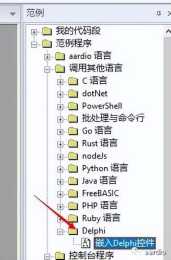一、 呼叫時期不同
轉自:https://www。cnblogs。com/xyn0909/p/8516074。html
1、componentWillMount 將要裝載,在render之前呼叫;
componentDidMount,(裝載完成),在render之後呼叫
2、componentWillMount 每一個元件render之前立即呼叫;
componentDidMount render之後並不會立即呼叫,而是所有的子元件都render完之後才可以呼叫
3、componentWillMount 可以在服務端被呼叫,也可以在瀏覽器端被呼叫;
componentDidMount 只能在瀏覽器端被呼叫,在伺服器端使用react的時候不會被呼叫
二、

注意,如果在shouldComponentUpdate裡面返回false可以提前退出更新路徑。
React元件生命週期的測試
class LifeCycle extends React。Component { constructor(props) { super(props); alert(“Initial render”); alert(“constructor”); this。state = {str: “hello”}; } componentWillMount() { alert(“componentWillMount”); } componentDidMount() { alert(“componentDidMount”); } componentWillReceiveProps(nextProps) { alert(“componentWillReceiveProps”); } shouldComponentUpdate() { alert(“shouldComponentUpdate”); return true; // 記得要返回true } componentWillUpdate() { alert(“componentWillUpdate”); } componentDidUpdate() { alert(“componentDidUpdate”); } componentWillUnmount() { alert(“componentWillUnmount”); } setTheState() { let s = “hello”; if (this。state。str === s) { s = “HELLO”; } this。setState({ str: s }); } forceItUpdate() { this。forceUpdate(); } render() { alert(“render”); return(
{parseInt(this。props。num)}
{“State:”}
{this。state。str}
三、 componentWillMount 和 componentDidMount 那個更適合請求資料?
轉自: https://blog。csdn。net/u011135887/article/details/79239328
有兩個方法可以請求資料:
componentWillMount
componentDidMount
除了這兩個函式,render方法肯定不是合適的請求資料的地方,因為在React-Native中請求資料都是非同步的(fetch),如果這樣做肯定會帶來一些不好的影響。下面分析一兩個方法的優缺點。
componentWillMount
這個方法正確呼叫的時候是在component第一次render之前, 所以第一眼看上去覺得就應該在這裡去fetch datas。
但是這裡有個問題, 在非同步請求資料中這一次返回的是空資料, 因為是在’render’之前不會返回資料。 所以在渲染的時候沒有辦法等到資料到來,也不能在componentWillMount中返回一個Promise(因為Promise的特性之一就是狀態不可變),或者用setTimeout也是不適合的。正確的處理方式就不要在這裡請求資料,而是讓元件的狀態在這裡正確的初始化。
順便說一句在es6中,使用extend component的方式裡的constructor函式和componentWillMount是通用的作用,所以你在構造函數里初始化了元件的狀態就不必在WillMount做重複的事情了。
componentDidMount
componentDidMount呢?這個生命週期函式在是在render之後呼叫一次,component已經初始化完成了。
在生產時,componentDidMount生命週期函式是最好的時間去請求資料,其中最重要原因:使用componentDidMount第一個好處就是這個一定是在元件初始化完成之後,再會請求資料,因此不會報什麼警告或者錯誤,我們正常請教資料完成之後一般都會setState。
————————————————
版權宣告:本文為CSDN博主「天矇矇亮」的原創文章,遵循CC 4。0 BY-SA版權協議,轉載請附上原文出處連結及本宣告。
原文連結:https://blog。csdn。net/qq_38719039/article/details/82378434




